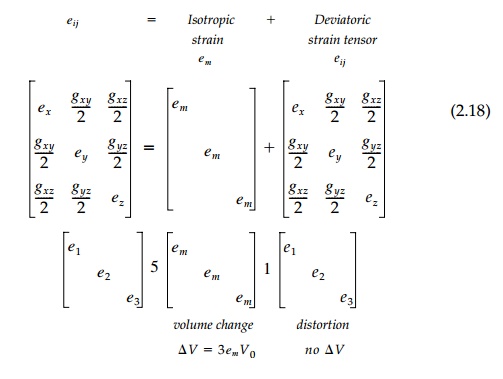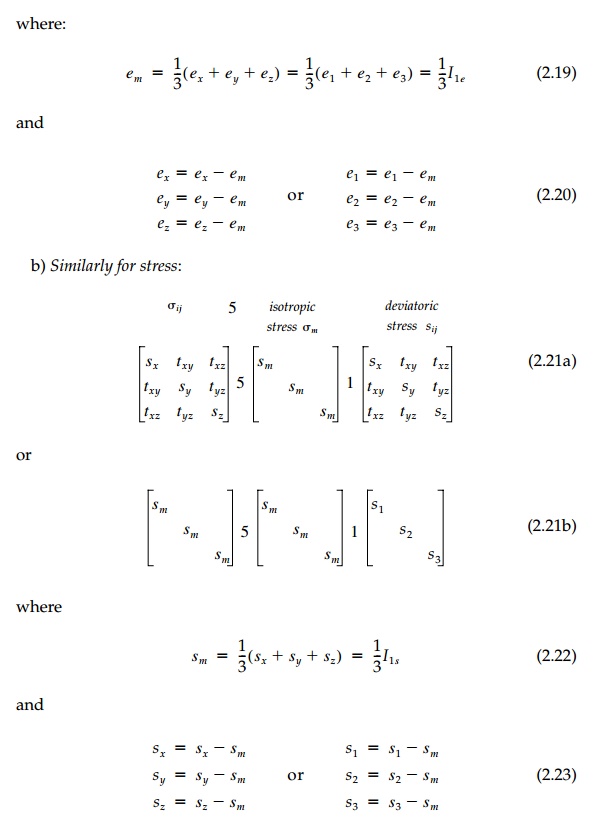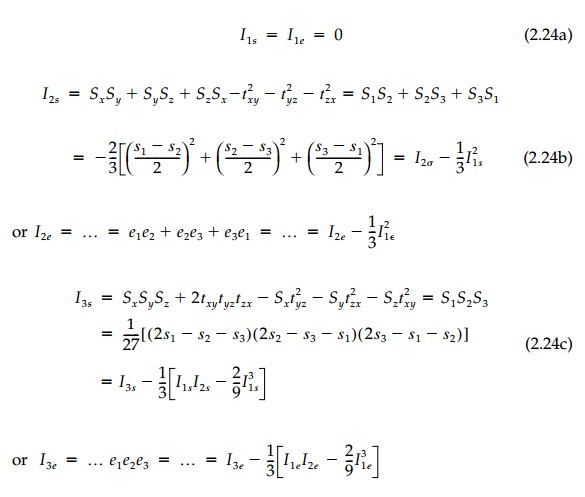Chapter: Civil : Principles of Solid Mechanics : Strain and Stress
Isotropic and Deviatoric Components
Isotropic and
Deviatoric Components
As we have seen in previews Section , any symmetric tensor can be split into isotro-pic and deviatoric
components as follows:
a)
For strain:


The isotropic component, Em,
?m is essentially a scalar (tensor of order zero) having only
magnitude with all directions principal. It is sometimes called the spherical
component. The mean stress, ?m, is hydrostatic pressure if
neg-ative, or suction if positive, and causes only volume change, 3Em,
per unit volume. The deviatoric component is just the opposite in that it
causes only distortion or shear with no volume change. The invariants of the
deviatoric tensors are:

This uncoupling of the tensor into
isotropic and deviatoric parts will turn out to be a fundamental physical
reality that is reflected both in the way materials behave under load, and how
the stress, strain, and displacements 'flow' through a body. It also turns out
that there is a particular orientation of axes (of viewing the tensor) where,
in fact, this fundamental uncoupling occurs naturally and the tensor components
become the invariants them-selves. This is the so-called octahedral state.
Related Topics